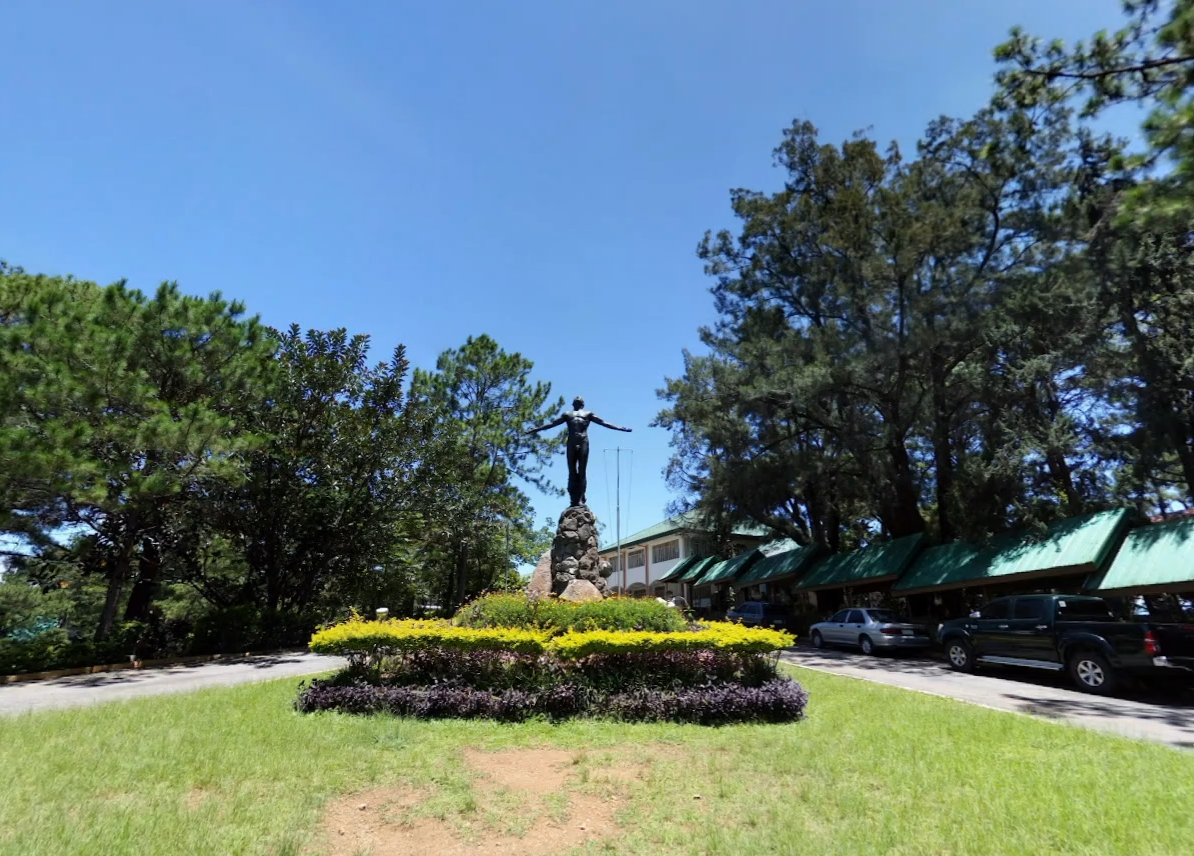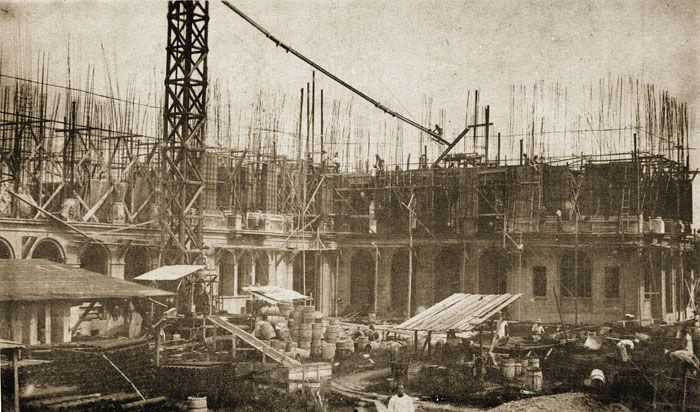|
Filipiniana
Filipiniana, or originally Filipiñana, based on the definition by Isagani Medina from "Collection Building: Filipiniana", in his ''In Developing Special Library Collections, Filipiniana: Proceedings'' (November 1992), are Philippine-related books and non-book materials (such as figurines, games, fashion and culture). The materials may be produced inside or outside the Philippines by Filipino or non-Filipino authors. The product could be literature written in any of the languages and dialects in the Philippines or a foreign language.Arlante, Salvacion M. and Rodolfo Y. Tarli"Filipiniana" Nature and scope of Filipiniana materials, The State-of-the-Art of Filipiniana Collections in the Philippines, The State of Filipiniana, Filipino Librarian Filipino Librarian Etymology Based on former dean a ...[...More Info...] [...Related Items...] OR: [Wikipedia] [Google] [Baidu] |
Filipino People
Filipinos ( tl, Mga Pilipino) are the people who are citizens of or native to the Philippines. The majority of Filipinos today come from various Austronesian ethnolinguistic groups, all typically speaking either Filipino, English and/or other Philippine languages. Currently, there are more than 185 ethnolinguistic groups in the Philippines; each with its own language, identity, culture and history. Names The name ''Filipino'', as a demonym, was derived from the term ''Las Islas Filipinas'' ("the Philippine Islands"), the name given to the archipelago in 1543 by the Spanish explorer and Dominican priest Ruy López de Villalobos, in honor of Philip II of Spain (Spanish: ''Felipe II''). During the Spanish colonial period, natives of the Philippine islands were usually known by the generic terms ''indio'' ("Indian") or ''indigenta'' ("indigents"). However, during the early Spanish colonial period the term ''Filipinos'' or ''Philipinos'' was sometimes used by Spanish writers ... [...More Info...] [...Related Items...] OR: [Wikipedia] [Google] [Baidu] |
Compañía General De Tabacos De Filipinas
The , S.A. (''General Tobacco Company of the Philippines'', abbreviated CdF), also known as the , was a Spanish multinational joint-stock company, one of the world's most important enterprises in the late 19th and early 20th century, and the Philippines' first private tobacco company. Founded by the 1st Marquess of Comillas in Barcelona in 1881 and based in Manila, it is also simply known as in Spain, and as in the Philippines. Although the company today specializes in tobacco trading, over the years the company also ran a shipping line and established factories with the aim of cultivating, trading, manufacturing, and commercializing tobacco from the Philippines. It also expanded its interests beyond tobacco, engaging in the exploitation of sugar and alcohol distribution, copra, abacá and maguey, as well as owning significant interests in electricity generation, transport and insurance. Owned by Spanish interests for most of its history, the was in sharp decline between ... [...More Info...] [...Related Items...] OR: [Wikipedia] [Google] [Baidu] |
University Of The Philippines
The University of the Philippines (UP; fil, Pamantasan ng Pilipinas Unibersidad ng Pilipinas) is a state university system in the Philippines. It is the country's national university, as mandated by Republic Act No. 9500 (UP Charter of 2008), giving it institutional autonomy. Originally founded by the American colonial government on June 18, 1908, it was established through the ratification of Act No. 1870 of the 1st Philippine Legislature to serve as an "advanced instruction in literature, philosophy, the sciences and arts, and to give professional and technical training" to eligible students regardless of "age, sex, nationality, religious belief and political affiliation." The University of the Philippines system has 8 constituent universities (CUs): UP Diliman, which serves as the system's flagship university, UP Los Baños, UP Manila, UP Visayas, UP Open University, UP Mindanao, UP Baguio, and UP Cebu which are scattered across 17 campuses. Widely regarded an ... [...More Info...] [...Related Items...] OR: [Wikipedia] [Google] [Baidu] |
Wenceslao Retana
Wenceslao "Wenchesco" Emilio Retana y Gamboa (September 28, 1862 – January 21, 1924), also known as W.E. Retana or Wenceslao E. Retana, was a 19th-century Spanish polymath. He was a civil servant, colonial administrator, writer, biographer, political commentator, publisher, bibliophile, bibliographer, Filipiniana collector, Spanish filipinologist, and Philippine scholar. Retana was a "onetime adversary" of Philippine national hero José Rizal José Protasio Rizal Mercado y Alonso Realonda (, ; June 19, 1861 – December 30, 1896) was a Filipino nationalist, writer and polymath active at the end of the Spanish colonial period of the Philippines. He is considered the national h ... who later became an "admirer" who wrote the first biographical account of the life of Rizal entitled '' Vida y Escritos del Dr. José Rizal'' or "Life and Writings of Dr. José Rizal".Roces, Alejandro RRizal's Death Anniversary Roses & Thorns, Opinion, The Philippine Star, December 29, 20 ... [...More Info...] [...Related Items...] OR: [Wikipedia] [Google] [Baidu] |
Philippine History
Earliest hominin activity in the Philippine archipelago is dated back to at least 709,000 years ago. ''Homo luzonensis'', a species of archaic humans, was present on the island of Luzon at least 67,000 years ago. The earliest known anatomically modern human was from Tabon Caves in Palawan dating about 47,000 years. Negrito groups were the first inhabitants to settle in the prehistoric Philippines. By around 3000 BC, seafaring Austronesians, who form the majority of the current population, migrated southward from Taiwan. Scholars generally believe that these ethnic and social groups eventually developed into various settlements or polities with varying degrees of economic specialization, social stratification, and political organization. Some of these settlements (mostly those located on major river deltas) achieved such a scale of social complexity that some scholars believe they should be considered early states. This includes the predecessors of modern-day population centers ... [...More Info...] [...Related Items...] OR: [Wikipedia] [Google] [Baidu] |
Imprint (trade Name)
An imprint of a publisher is a trade name under which it publishes a work. A single publishing company may have multiple imprints, often using the different names as brands to market works to various demographic consumer segments. Description An imprint of a publisher is a trade name—a name that a business uses for trading commercial products or services—under which a work is published. Imprints typically have a defining character or mission. In some cases, the diversity results from the takeover of smaller publishers (or parts of their business) by a larger company. In the case of Barnes & Noble, imprints have been used to facilitate the venture of a bookseller into publishing. In the video game industry, some game companies operate various publishing labels with Take-Two Interactive credited as "the father of label" in their case the labels are wholly owned incorporated entities with their own publishing and distributing, sales and marketing infrastructure and manag ... [...More Info...] [...Related Items...] OR: [Wikipedia] [Google] [Baidu] |
Paragraph
A paragraph () is a self-contained unit of discourse in writing dealing with a particular point or idea. Though not required by the orthographic conventions of any language with a writing system, paragraphs are a conventional means of organizing extended segments of prose. History The oldest classical British and Latin writing had little or no space between words and could be written in boustrophedon (alternating directions). Over time, text direction (left to right) became standardized. Word dividers and terminal punctuation became common. The first way to divide sentences into groups was the original ', similar to an underscore at the beginning of the new group. The Greek ' evolved into the pilcrow (¶), which in English manuscripts in the Middle Ages can be seen inserted inline between sentences. Ancient manuscripts also divided sentences into paragraphs with line breaks (newline) followed by an initial at the beginning of the next paragraph. An initial is an oversized ca ... [...More Info...] [...Related Items...] OR: [Wikipedia] [Google] [Baidu] |
Chapter (books)
A chapter (c''apitula'' in Latin; ''sommaires'' in French) is any of the main thematic divisions within a writing of relative length, such as a book of prose, poetry, or law. A chapter book may have multiple chapters that respectively comprise discrete topics or themes. In each case, chapters can be numbered, titled, or both. An example of a chapter that has become well known is "Down the Rabbit-Hole", which is the first chapter from ''Alice's Adventures in Wonderland''. History of chapter titles Many ancient books had neither word divisions nor chapter divisions. In ancient Greek texts, some manuscripts began to add summaries and make them into tables of contents with numbers, but the titles did not appear in the text, only their numbers. Some time in the fifth century CE, the practice of dividing books into chapters began. Jerome (d. 420) is said to use the term ''capitulum'' to refer to numbered chapter headings and ''index capitulorum'' to refer to tables of contents. ... [...More Info...] [...Related Items...] OR: [Wikipedia] [Google] [Baidu] |
Philippine Islands
The Philippines (; fil, Pilipinas, links=no), officially the Republic of the Philippines ( fil, Republika ng Pilipinas, links=no), * bik, Republika kan Filipinas * ceb, Republika sa Pilipinas * cbk, República de Filipinas * hil, Republika sang Filipinas * ibg, Republika nat Filipinas * ilo, Republika ti Filipinas * ivv, Republika nu Filipinas * pam, Republika ning Filipinas * krj, Republika kang Pilipinas * mdh, Republika nu Pilipinas * mrw, Republika a Pilipinas * pag, Republika na Filipinas * xsb, Republika nin Pilipinas * sgd, Republika nan Pilipinas * tgl, Republika ng Pilipinas * tsg, Republika sin Pilipinas * war, Republika han Pilipinas * yka, Republika si Pilipinas In the recognized optional languages of the Philippines: * es, República de las Filipinas * ar, جمهورية الفلبين, Jumhūriyyat al-Filibbīn is an archipelagic country in Southeast Asia. It is situated in the western Pacific Ocean and consists of around 7,641 islands ... [...More Info...] [...Related Items...] OR: [Wikipedia] [Google] [Baidu] |
De La Salle University Library
De La Salle University ( fil, Pamantasang De La Salle or Unibersidad ng De La Salle), also referred to as DLSU, De La Salle or La Salle, is a private, Catholic coeducational research university run by the Institute of the Brothers of the Christian Schools in Taft Avenue, Malate, Manila, Philippines. It was established by the Christian Brothers in 1911 as the De La Salle College (DLSC) in Nozaleda Street, Paco, Manila with Blimond Pierre Eilenbecker, FSC serving as director, and is the first De La Salle school in the Philippines. The institution moved to its present location in 1921. The college was granted university status on February 19, 1975, and is the oldest constituent of De La Salle Philippines (DLSP), a network of 16 educational institutions, established in 2006 replacing the De La Salle University System. The institution started as an exclusive all-boys elementary and high school. In 1920, it began offering a two-year Associate in Arts Commerce program, which was la ... [...More Info...] [...Related Items...] OR: [Wikipedia] [Google] [Baidu] |




